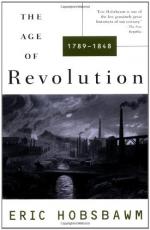|
This section contains 318 words (approx. 1 page at 400 words per page) |

|
Ideology: Secular Summary and Analysis
All the important thought taking place during this period is secular, Hobsbawm claims. It is all closely associated with a liberal view of society and the progress of society through use of reason and philosophical enlightenment, and a "middle class liberal ideology" emerges (p. 236). Hobsbawm marks the beginning of this ideology with the publication of Wealth of Nations by Adam Smith in 1776 and its peak at the publication of Principles of Political Economy by David Ricardo in 1817. By 1830, the turning point in Hobsbawm's assessment of the period, the true liberal ideology begins to decline, having become "vulgarized" by business interests.
This ideology is only reluctantly embraced by those in political power, who are torn between an ideological desire for democracy and the idea that people should be ruled by an elite group best suited for it. This prevents any...
(read more from the Ideology: Secular Summary)
|
This section contains 318 words (approx. 1 page at 400 words per page) |

|




